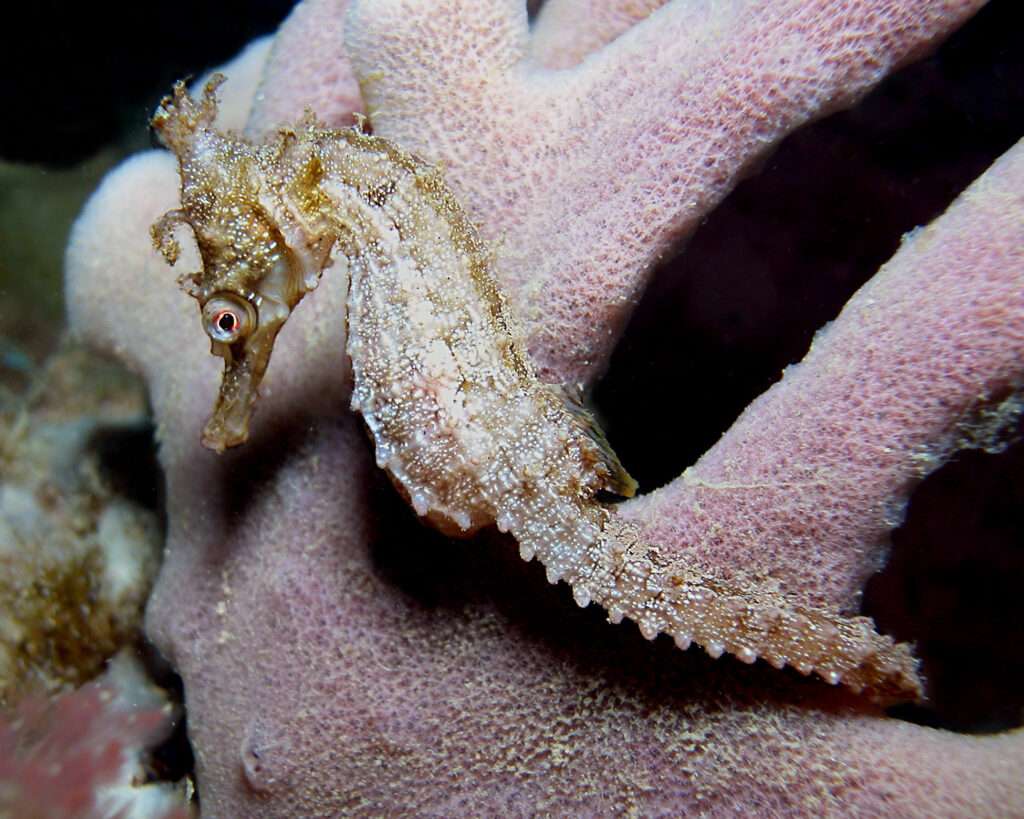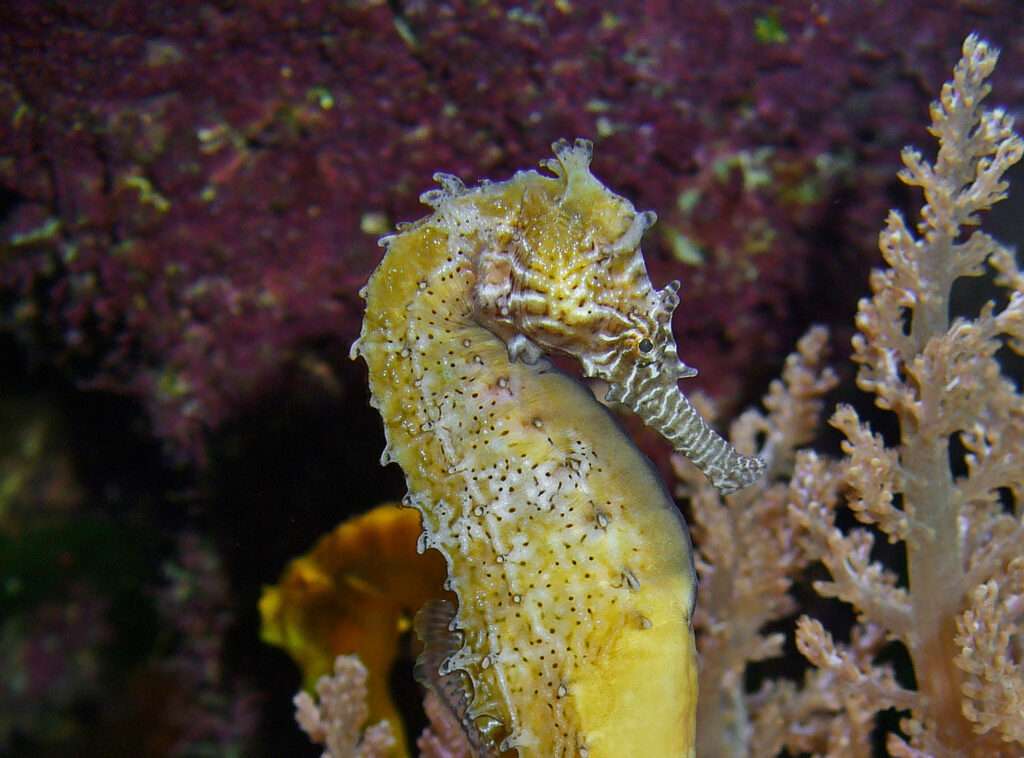
A species of marine fish belonging to the family Syngnathidae is called Hippocampus whitei, also referred to as White’s seahorse, New Holland seahorse, or Sydney seahorse. It is believed to be indigenous to the Southwest Pacific, from the Solomon Islands to Sydney, New South Wales, and southern Queensland (Australia). It thrives in both natural and man-made shallow, inshore settings.
Characteristics
The White’s Seahorse has a large snout, 16 pectoral fin rays, 17–18 dorsal fin rays, 34–35 tail rings, a tall coronet with a five-pointed star at the top, and various spines that can be low, moderately developed, spherical, or rather acute. Color is quite variable because the species is known to alter its color depending on its mood and the color of the environment it lives in. Male seahorses can be distinguished from females by the absence of the pouch beneath the abdomen in males. They are believed to be among the ocean’s slowest swimming fish despite having a tiny anal fin that serves as a means of propulsion. The White’s Seahorse is a medium-sized seahorse with a maximum length of 16 cm (from the tip of the tail to the top of the seahorse crown).

Habitat
Australia’s east coast is home to the White’s Seahorse. One of four kinds of seahorses known to exist in NSW waters, the species bears the name John White in honour of the First Fleet’s Surgeon General. Natural environments including sponge gardens, seagrass meadows, and soft corals are among the habitats that are regarded as being crucial for the White’s Seahorse. It is also known to make use of man-made habitats like jetty pylons and protective swimming net enclosures. Adult White’s Seahorses in Port Stephens exhibit a preference for environments with sponges, soft coral, and Posidonia australis seagrass. Sponge and soft coral habitats, as well as gorgonian fans, are preferred by juveniles. They most frequently occur in constructed protective swimming net habitats in the Sydney area.
Feeding and Diet
When eating, a seahorse will quickly lift its head, drop the floor of its mouth to increase the volume, then open its mouth. As a result of all three happening almost simultaneously, prey is pulled into the mouth and up the long, tube-like snout.
Breeding Behaviors
Seahorse reproduction is simply astounding. The female seahorse lays her eggs in a pouch on the male seahorse called a marsupium. The male of the White’s Seahorse fertilizes the eggs and tends to them for around three weeks (depending upon several factors including the temperature). He aerates the pouch during this time and, most astoundingly, uses his own “placental secretions” to feed the eggs through a capillary network in the pouch. The male gives birth to 100–250 completely formed baby seahorses, each measuring approximately 1 cm in length, at the end of the “pregnancy.” These seahorses swim away to take care of themselves. The male then almost immediately “becomes pregnant” once more. The monogamous White’s Seahorse reproduces from October to April in pairs that remain together permanently.
Table





